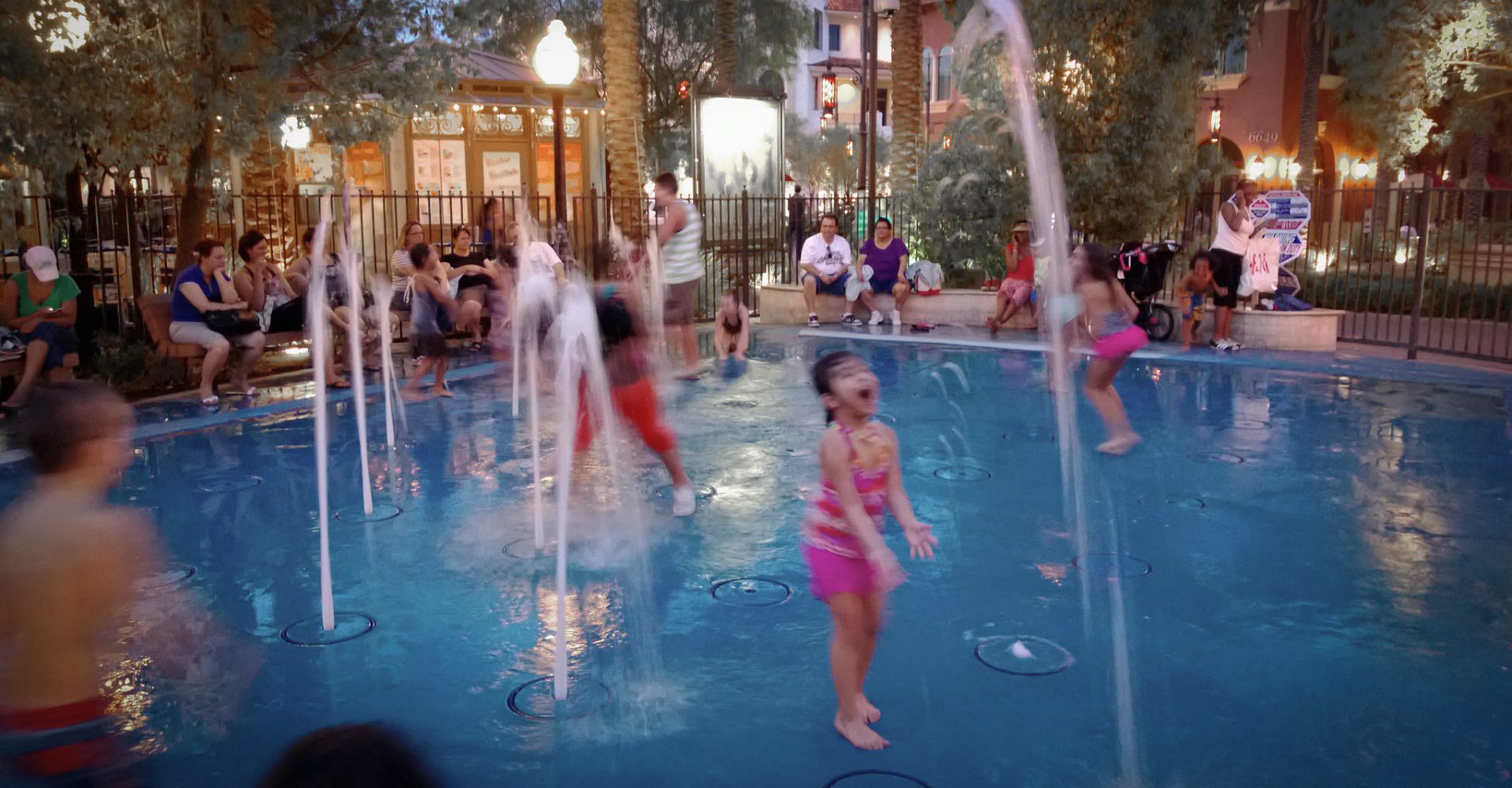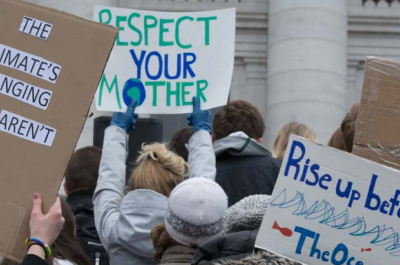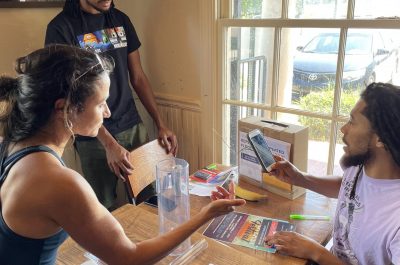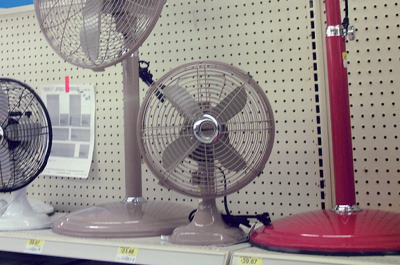Every day Sue Blythe likes to take a walk around her neighborhood near Gainesville, Florida. But a late May heatwave prevented her from doing that.
“I was just housebound,” She said. “It was so hot and I’m in my seventies.”
The heatwave Blythe experienced affected nearly the entire Southeast and broke records for some of the earliest cases of triple digit temperatures. Temperatures in Charleston, South Carolina reached 100 for the first time ever in May according to AccuWeather.
Heatwaves are becoming increasingly common as climate change warms global temperatures. Most parts of the contiguous United States, are expected to have an increase of 20-30 more days each year with a high temperature over 90°F by mid-century.
Those hot days threaten public health. A study highlighted in the 2016 Climate and Health Assessment published by the U.S. Global Change Research Program found that heat-related deaths in 209 U.S. cities by the end of the century could increase between 20,000 and 30,000 deaths annually as compared to 1990.
This summer at ISeeChange, we are digging into extreme heat and what early warning signs and risk factors — from weather conditions, to vulnerable groups, to the symptoms of heat-related illness. Throughout the summer months, we will be collecting observations of heat from our community and testing out new heat sensor projects. Here are four things to know as temperatures rise, and to share ISeeChange observations about.
Weather to watch
Hot temperatures alone can cause health problems, and the degree of heat that’s dangerous varies based on where you live. Pediatrician Samantha Ahdoot said that in Virginia, they see a spike in heat related illnesses on days when the temperature gets above 95°F. For people who live further north and are less accustomed to the heat, dangerous heat effects can come at lower temperatures.
No clouds and scorching heat making unable to bear. Day by day heat is increasing.
Other weather conditions that can make high temperatures even more dangerous. Hot days with high humidity inhibit the body’s primary method of cooling down: Sweat. In order to keep cool, sweat needs to be able to evaporate off of the skin, and evaporation rates are lower on days with high humidity because the air is already so heavy with moisture. Additionally days with low wind speeds are hotter, and thus riskier, than breezier days.
High nighttime temperatures are also something to watch out for, particularly for people who don’t have air conditioning. Cooler nights help cool down buildings and bodies. Without that reprieve, people are under even more heat stress.
Additionally, when temperatures rapidly rise from cool to hot, bodies don’t have time to adjust. This is particularly concerning for people who work outside and athletes. According to the Korey Stringer Institute, which works to prevent heat-related deaths in athletes, the body takes between one and two weeks to adapt to heat. Some examples of adaptations the body uses to better handle heat are changes in heart rate, a higher sweat rate, decreased salt losses in sweat and urine, and improved blood pressure response. People who work outside and outdoor athletes, need to be particularly careful when temperatures rapidly warm. It’s recommended that those groups slowly ease into spending more time outside. For example, the Korey Stringer Institute recommends that athletes only participate in one practice a day in the first five days and not wearing equipment until day six in the heat.
2. Vulnerable groups to check on
In addition to those who spend a lot of their time being active outside, other groups of people are also more at-risk when the days get hot. According to the Centers for Disease Control and Prevention, people with chronic medical conditions like heart disease, poor blood circulation and obesity are more vulnerable to heat. Some people with disabilities may also be more at-risk. In particular, spinal cord injuries limit the body’s ability to stay cool. According to New Earth Disability, a climate change initiative by the World Institute on Disability, cooling shelters are not always accessible nor have the necessary support to serve people with disabilities. Some medications like those used to treat mental illness and Parkinson’s disease, and water pills and tranquilizers also increase heat sensitivity.
Adults over the age of 65 account for a high proportion of heat-related deaths. According to data from the CDC, from 1999-2003, people over the age of 65 accounted for 40 percent of recorded heat-related deaths. As people age, their ability to cool down and adapt to higher temperatures decreases making them more vulnerable.
Children are more susceptible to heat-related illnesses and may need to be reminded to rest and drink plenty of water on hot days. Children under one need to be especially carefully watched. According to Ahdoot, infants are the highest risk group for heat mortality because they can’t communicate their needs and they have a lower blood volume. Ahdoot also recommends dressing children in lightweight and light colored clothing on hot days, and she noted that it’s critical to never leave infants or children in parked cars, even if it feels cool outside.
Low-income individuals and families are also more vulnerable to the heat as they are more likely to lack access to proper health care, air conditioning and transportation.
Where you live also affects your risk. People who live in cities are more likely to experience extreme heat because of the Urban Heat Island effect. Areas with more asphalt and concrete and without parks, shade and a breeze are typically going to get the hottest.
People who live in cities without air conditioning experience extreme heat indoors. In 2016, ISeeChange partnered with the community of Harlem, WE ACT for Environmental Justice, AdaptNY, and WNYC to understand the impacts of indoor urban heat. For eight weeks, thirty residents in Harlem kept temperature sensors inside their apartments and told us how they were experiencing the heat on ISeeChange. The effort proved that indoor heat waves behave differently than outdoor heat waves – with indoor air temperatures up to 7 degrees hotter than outdoor temperatures and buildings retaining heat days before and long after heat waves subside.
3. Types of heat-related illnesses and warning signs
According to the CDC, there are five main illnesses that can come as a result of heat exposure. Knowing the early symptoms and how to treat them can help save lives.
“It is best to identify heat illness early and seek air conditioned environments and fluids,” Ahdoot said. “Certainly people who are feeling significantly weak, light headed or have experienced cramps or pain — anyone who’s having any neurological symptoms needs to definitely go to an emergency room.”
Heat stroke is the most dangerous heat-related illness. Warning signs of heat stroke may include: A body temperature at or over 103°F; skin that is hot, red, dry or damp; a fast, strong pulse; headache; dizziness; nausea; confusion; and losing consciousness. If someone has these symptoms, call 911 immediately, move them to a cool place and lower their temperature with cool clothes or a cool bath. The CDC recommends that you should not give the person anything to drink.
Heat exhaustion is characterized by symptoms like: Heavy sweating; skin that is cold, pale and clammy; a rapid, weak pulse; nausea or vomiting; muscle cramps; tiredness or weakness; dizziness; headache; and fainting. If a person experiences these signs, it’s recommended that they move to a cool place, loosen their clothes, put cool cloths on their body or take a cool bath, and sip water. If symptoms get worse or last longer than an hour, or if the person is vomiting, seek medical help. Heat exhaustion can turn into heat stroke if they don’t cool down.
Another heat-related illness is heat cramps which typically occur during heavy physical activity. Warning signs include: Heavy sweating during exercise and muscle pains or spasms. If you have those symptoms, the CDC recommends that you stop physical activity, move to a cool place, drink water or a sports drink, and wait for the cramps to subside before exercising again. If you have heart problems, are on a low-sodium diet or the cramps last longer than an hour, get medical help.
Sunburn is also something to watch for on hot days, and can hamper the body’s ability to cool down. If you have a sunburn, stay out of the sun, put cool cloths and moisturized lotion on the burns, and avoid breaking any blisters.
Heat exposure can also cause heat rash which appear as small red or pink bumps that look like pimples and can be itchy. The rash usually appears on the neck, chest, groin or in elbow creases. If a person has a heat rash, they should stay in a cool, dry place and use a powdered rash treatment to soothe ease the irritation.
Ahdoot also noted that extreme heat has been correlated to aggressive behavior. Lab experiments have found that when people get uncomfortably hot, their tempers and irritability increase. Additionally, violent crimes have been found to occur more often at higher temperatures.
4. Help your community prepare for more extreme heat
As places, particularly cities, look to reduce the risk of heat-related illnesses as annual temperatures continue to climb, many are turning toward creating new parks and green spaces. Identifying the areas most in need of interventions is something that citizens can get involved in since they are the experts in their neighborhoods and on their streets.
In Las Cruces, New Mexico, a small city not far from El Paso, city officials are working on implementing a cool corridor of shade trees to help residents of low income neighborhoods get some relief from the heat.
In order to identify areas in need of cooling, and convince other officials about the need for the project, Lisa LaRocque, Las Cruces’ sustainability officer, worked with the University of Arizona and NASA to collect data on the city’s urban heat island. They used mapping to see where problem areas for heat overlapped with vulnerabilities like low-income neighborhoods and age demographics.
While that mapping helped give LaRocque a sense of the big picture of heat in Las Cruces, gathering stories and input from residents has been essential.
“There was this one woman who said, ‘I have to sit outside it’s too hot in my house,’” LaRocque said, “Or there was a senior couple and the wife had alzheimer’s. He couldn’t leave, he had to be with her as her caretaker and their house went up to over 95°F part of the summer. So there’s all these extra layers.”
Those extra layers can’t always be determined by satellite images and thermometer readings. Sometimes only residents can give a full picture of how their neighborhood heats up and how that heat affects their lives.
That’s why we want you to track your heat on ISeeChange this summer. Tell us when you’re feeling the physical impacts of heat, when your indoor temperatures get unbearable, when sports practices are cancelled, or even if you and your family are more irritable. Help us understand any and all kinds of experiences you have as the temperatures climb.
Photo by N I C O L A via Flickr.




